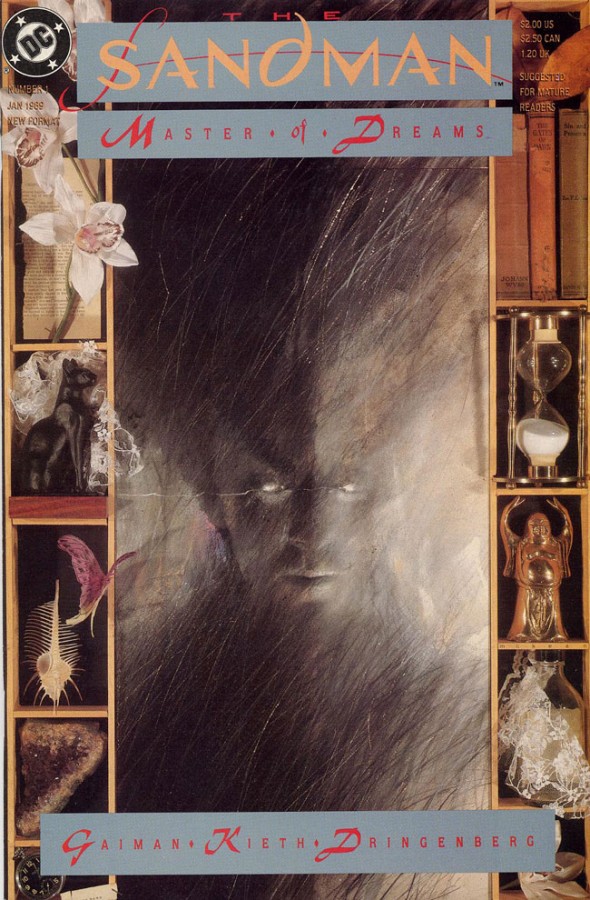In ‘The Visual Display of Quantitative Information’ (1983) Tufte highlighted the method of repeating information in a visually short sequence and named it ‘Small Multiples’. He then went on to say in his later works, “For a wide range of problems in data presentation, small multiples are the best design solution.” – E. Tufte, Envisioning Information (1990). Small multiples allow for multiple sources of information to be dissected within a single glance, this speeds up the consumption of the information for the reader giving them a better experience.

This example is of ‘The Sandman: Master of Dreams’ (1989), the first issue of the first volume of Neil Gaimen’s fantasy saga. Cover by Dave Mckean. In this cover Mckean experiments with layered imagery combining traditional drawn art with less tradition uses of photography and digital media. This physical collage of combined pieces conveys how small multiples can be used to visually convey information to a viewer without the use of text. The different items displayed give a hint to the plot and themes of the story but don’t specifically tell the reader, therefore, allowing them to think for themselves creating a sense of engagement. The placement and order of the items allows for the objects to be viewed within one glance and also prevents them from overwhelming the readers view and taking away from the main centre piece. If not done correctly one of the objects may stand out to much destroying the balance of the arrangement and the viewer would in turn have a harder time focussing on the piece as a whole.
References:
Tufte, E.R., 1990, Envisioning Information. p. 67. Cheshire: Graphics Press. Accessed [15/10/21]
Gaiman, N., 1989. The Sandman: Master of Dreams. Volume 1. DC Comics. Cover art by Dave Mckean. Accessed [15/10/21]
